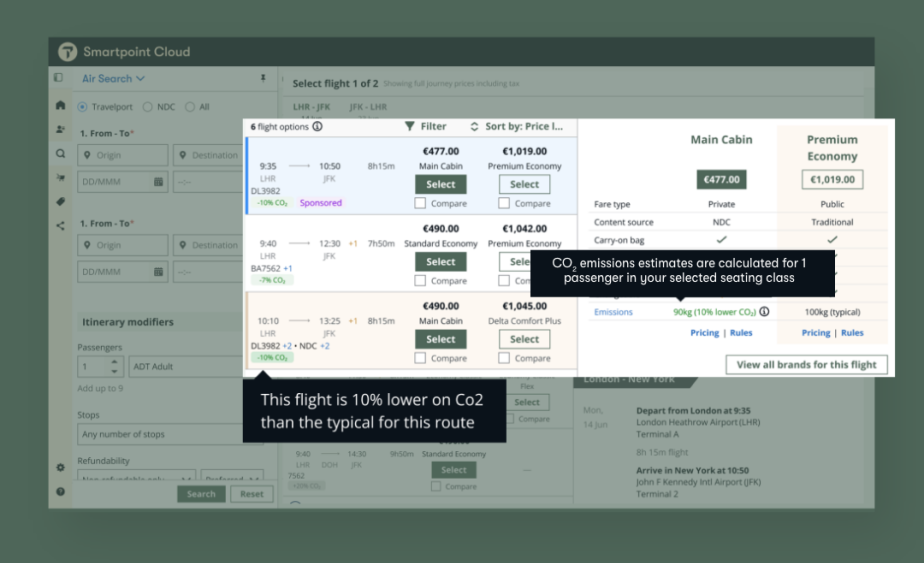SINGAPORE, 22 September 2023: The days of dubious conflicting emission estimates for flights are numbered as a more consistent accurate counter gains acceptance.
Earlier this week, Travelport, a global technology company that powers travel bookings for content suppliers worldwide, launched more transparent carbon dioxide (CO2) emission estimates for flights saying it would end ambiguity and confusion for travellers.

It uses the publicly accessible Travel Impact Model (TIM), which Google developed in partnership with the Travalyst coalition. This new feature is the first of Travelport’s roll-out of offerings to help agents, travel managers, and travellers make more eco-conscious choices when planning and booking trips.
“Agents, corporate and leisure travellers want to feel more confident in making better travel decisions that put environmental impact as a top priority,” said Travelport chief product and technology officer Tom Kershaw.
“Agents and travellers are seeing different carbon emissions scores and rankings for the exact same flight options when searching them in different channels. As an industry, adopting a free, publicly accessible data framework will allow us all to be more consistent in how travel options are displayed and scored based on factors like carbon emissions, environmental certifications, or waste initiatives.”
Travel retailers using Travelport can easily compare CO2 estimates generated by the TIM per flight, per passenger, across carriers, at the point of sale based on factors such as the type of aircraft, seat configuration, distance of the flight, load factors and more.
These enhanced TIM carbon emission estimates for air segments can be accessed via Smartpoint, Trip Quote and the Travelport API Suite in the Flight Service Information Display and In-Flight Search Response views. The TIM was developed by Google, in partnership with the Travalyst coalition, an independent not-for-profit organisation of which Travelport is a member.
“Travelport joined the Travalyst coalition in 2022 to help drive the standardisation and scale of environmentally conscious travel information across travel platforms,” Kershaw continued. “By adopting the Travel Impact Model and using this data methodology for flight emission estimates displayed on agents’ screens, we’re able to align with all of the major global travel platforms to provide more transparency and eliminate confusion with inconsistent rankings across platforms.”







